Avid houseplant enthusiasts know that to get your hands on a Philodendron Birkin can be a rare find. And those new to the tropical world will want to know that this rare and striking Philodendron is a great place to start in your houseplant journey. This plant is considered an easy one to care for. It is also a slow grower so will not take over your space to quickly.
Check out this detailed guide to discover why the Birkin, or White Wave, is so rare and to find everything you need to know about caring for your Philodendron Birkin.
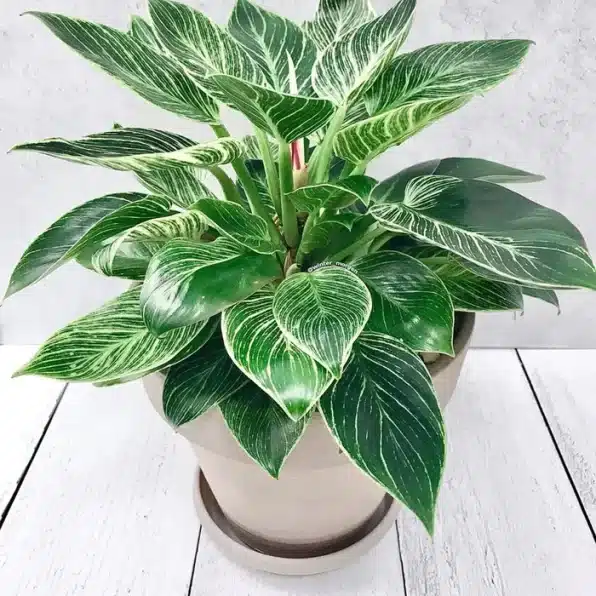
What is a Philodendron Birkin
Philodendron plants are tropical climate-loving plants that were first found in the rainforests of Brazil. They are a member of the aroid family of plants known as the Araceae. The Philodendron Birkin, one of the rarer of the 1800 species of Philos is one that is not actually found in nature.
How is this possible? Philodendron Birkin is the result of a spontaneous chimeric mutation that occurred when a propagated Philodendron Rojo Congo was mutated with a Green-Leaf Philodendron. This mutation gave us the variegated white pin-striping against deep green leaves that puts on a stunning display in any houseplant collection.

As a tropical plant, the Birkin does require some specific care regarding its water, temperature, soil and humidity needs. But with enough attention to these details even a beginning gardener will be able to raise this beautiful and intriguing plant.
Philodendron Birken at a Glance:
| Common Name: | White Wave |
| Botanical Name: | Philodendron Birken |
| Plant Type: | Tropical, houseplant |
| Size: | Up to 3 feet tall , 8-12 inches wide |
| Light: | Bright, indirect sunlight, 12 hours/day |
| Soil: | Moist, aerated, well-draining |
| Water: | 1x/week, when top inch is dry |
| Vulnerabilities: | Spider mites, Thrips, Overwatering |
| USDA Growing Zones: | 10 or higher |
How to Care for Philodendron Birkin Plants
Philodendron Birkin plants are much like their 1800 other subspecies tropical houseplant relatives. With some attention to water, humidity and temperature needs, this Philo is an easy to care for addition to your houseplant collection.
Philodendron Birkin Soil Requirements
Philodendrons are considered an aroid plant which means they thrive in tropical conditions at the base of trees in the forest. If you know anything about the soil in a tropical location you know it is loose and airy, allowing water to drain but holding on to enough to keep the plant happy. This is exactly what the Birkin needs.
Look for an aerated potting soil mixture that likely contains perlite, peat moss, or pine bark. It might even contain any combination of the three. Other additives that allow for fertile, well-draining soil conditions include orchid bark, organic compost, or coco coir.

Philodendron Birkin Watering Needs
Like any tropical houseplant, the Philodendron Birkin is not super picky about its watering needs, but it does like you to pay attention to it. It definitely does not like to be overwatered or underwatered.
The best rule of thumb, and you can even use your thumb to do this, is to touch the top 1-2 inches of the soil to see if it is dry. If they are dry, go ahead and give it some water. If it still feels moist wait another day or 2. During its growing season you will probably need to give the Philo Birkin a drink 1-2 times a week. It will be much less, letting the soil dry out completely, during the winter months.
Philodendron Birkin Light Requirements
Just like its water requirements, the Philodendron Birkin’s light requirements can best be described as not too much but not too little. They like bright light, but as long as it’s indirect and not too hot. The heat of the afternoon sun directly on its leaves will burn them. But if it isn’t given enough light you’ll lose that unique white stripe variegation.
It is recommended that you put your Birkin plant in a place that will get up to 12 hours of bright, indirect sunlight. The best place to consider is a West or East facing window or patio door.
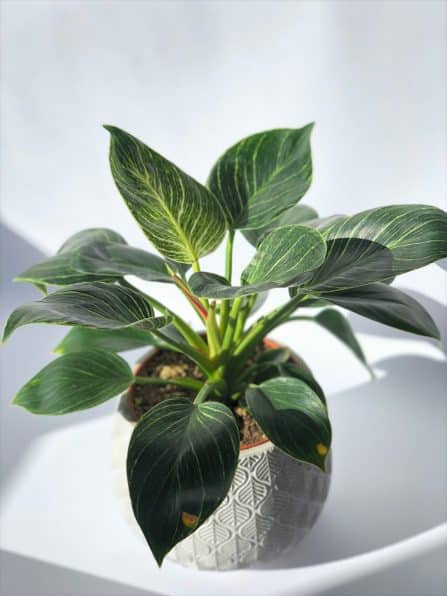
Temperature & Humidity Requirements
As a tropical plant, the Philo Birkin prefers a warm, moist environment. It is best if you keep it in a location that can consistently stay between 60 – 75 degrees Fahrenheit. If you live in a location that gets cold winters you will also want to keep it away from cold or drafty windows, as temperatures that dip below 55 degrees can cause damage to the plant’s sensitive leaves.
Humidity levels are also best at a tropical level of 40-60%. For some, the best way to achieve this might be to let you Birkin hang out near a bathroom window where it can get some light but also absorb the moisture and heat from a hot shower. If this isn’t an option, consider placing your plant on a tray with pebbles and water so it has extra moisture surrounding it. You can also mist the leaves on a daily basis if the environment seems dry.
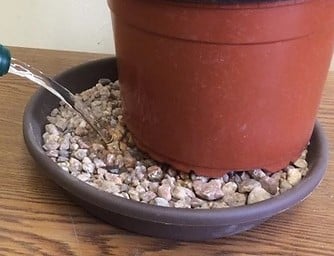
Fertilizing a Philodendron Birkin
Fertilizing a Philodendron Birkin is pretty straightforward. Fertilizer only needs to be applied once or twice a month during the growing season in spring and summer. In the off-season, once every two months is sufficient. If you want a large plant with big, luscious leaves than fertilizing is important. But it is also important not to over fertilize as this can damage the plant’s roots.
A liquid balanced fertilizer designed for houseplants is recommended when feeding this plant. Something water soluble with an even ratio of 20-20-20 Nitrogen, Phosphorus, and Potassium. The plant also likes nutrients such as calcium and magnesium. When apply the fertilizer you should dilute it to half the strength on the package instructions.

How to Prune Philodendron Birkin
The Philodendron Birkin does not actually require any pruning as it offers no benefit to the plant other than to remove any dry or damaged leaves. It is a fast grower and will just continue to get bushier and taller.
Instead of pruning it is advised that you repot this plant at least once every 1-2 years. With it rapid growth rate the roots will continue to grow and eventually become root bound if they are not given space to expand. This can impede the growth of the plant so giving it more room in a larger pot is highly recommended.
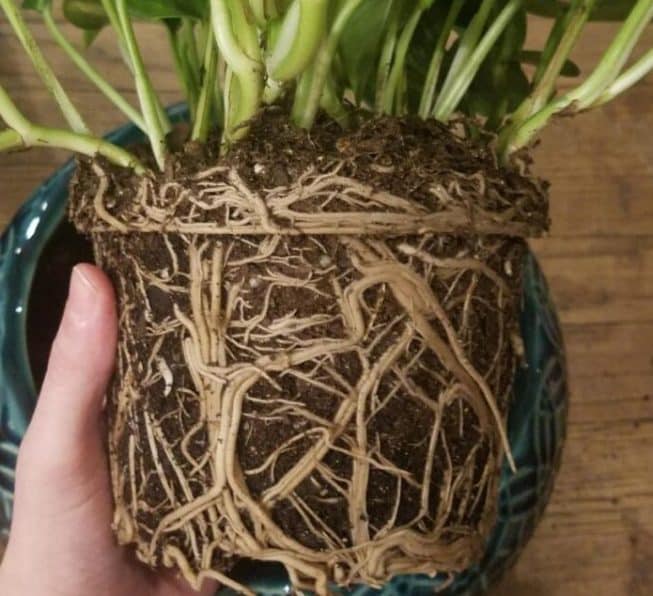
How to Propagate Philodendron Birkin
There are two ways to propagate a Philodendron Birkin – water propagation and air layering propagation. Both involve stem cutting and should be done during their growing season in spring or summer.
Water Propagation
- Use a sharp, clean pruning shears to cut a stem that is between 3 to 6 inches long. The cut should be right below a set of 2 leaves and needs to include the leaf nodes.
- Starting at the bottom pull off the leaves to leave 2 bare leaf nodes.
- Using a glass jar, fill it to an inch below the top with water and let it sit overnight to rid the water of chlorine. Then place the stem cutting in the jar, making sure the leaf nodes are immersed.
- Change the water in the jar every 2 days to keep it clean and bacteria-free. After several days you will see roots forming.
- Once you see over an inch of root growth you can repot your new Birkin plant in soil.
Air Layering Propagation
- After making a stem cutting using the same method as above you will make a 2 inch cut or “wound” down the stem’s center with a sharp knife. Place a toothpick or thin wire in the wound to hold it open.
- Tie a handful of sphagnum peat moss around the cut securing it with a piece of string. Moisten the peat moss.
- Using tape, secure a piece of plastic film all the way around the peat moss. All of the moss should be covered and held tightly to the stem. Keep the moss damp throughout the process to promote root growth.
- After about 2 weeks you will see roots begin to emerge from the peat moss. Cut the stem right below the moss. This section of stem and root can then be planted in a pot with soil.

Varieties of the Philodendron Birkin Plant
Because of its origin as a genetic mutation, the Birkin does not have specific varieties directly descendent of it. However there are many varieties of Philodendron plants, nearly 500 species, that are directly or indirectly related to and similar to this Philodendron variety.
Philodendron Rojo Congo: Another Philo hybrid, the Rojo Congo is a cross between the Impeiral Red and the Tatei Philodendron plants. This variety has unique red stems topped by glossy leaves that are reddish brown with touches of green, later turning a deep green as the plant matures.
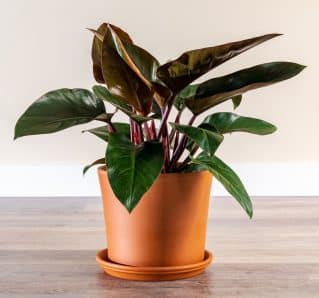
Imperial Red Philodendron: This philodendron variety is another hybrid created by plant growers. It is an upright tropical plant with noticeably bright red and green leaves that are wide and oval-shaped.
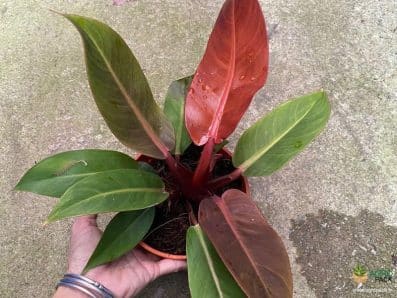
Imperial Green Philodendron: A non-vining philodendron with large, smooth, glossy-green leaves. These leaves fan out sometimes as far as 3 feet, although there are not a lot of them on the center stem.
Philodendron Xanadu: An impressive philodendron with unique finger-like leaves, almost resembling palm branches. When grown outdoors or in larger pots, this philo can get quite large.

Philodendron Moonlight: This variety is known for its bright green, almost neon leaves that emerge from a reddish colored stem. Another hybrid philodendron, the Moonlight is easy to care for and can also be grown as an outdoor plant.
Philodendron Camposportoanum: Philodendron Campo is a small non-climbing plant with unique leaf colors and shapes. Younger leaves are oval shaped changing to a three-lobed pattern as it matures. Colors range from dark green to a pinkish hue.
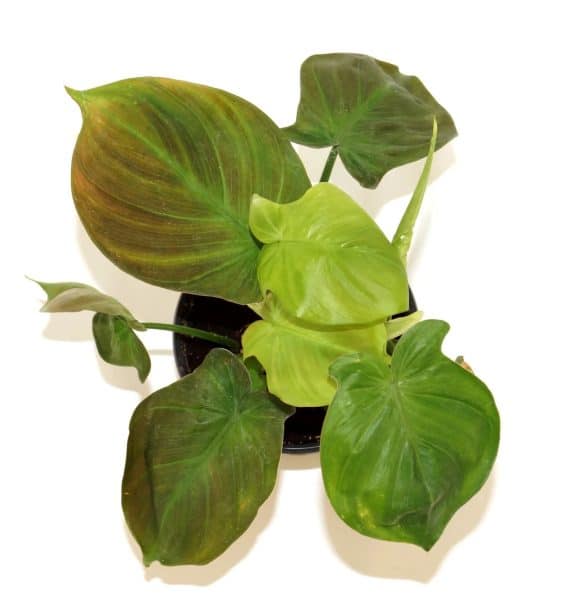
Common Philodendron Birkin Problems
Growing
The common growing problems with the Philodendron Birkin are most noticeable in their leaves. They can have curled leaves, dropping leaves, or leaves that start to turn brown or yellow. Most of these problems stem from one simple solution – too much or not enough water.
Curling leaves are a sign of dehydration which can be fixed by misting or making sure to water when the top inch or two of soil is dry. Drooping leaves can mean not enough water, too much fertilizer, or being exposed to temps that are too low. Yellowing leaves typically come from root rot if the plant is overwatered but can also stem from too much direct sunlight.
Diseases
No known specific diseases other than root rot if the plant is left to sit in standing water or soil that is too heavy that it’s not able to drain.
Pests
Like most tropical houseplants, one of the Philodendron Birkin’s most common pests is the spider mite who loves damp, warm environments. Spider mites will eat the plant and use up all its nutrients until the leaves start to dry up and fall off. Mites can be deterred with a water spray bottle or insecticide soap.
Thrips are another tiny pest that loves to feed on this plant’s leaves. These very tiny bugs are black or yellow and very hard to notice until they start leaving noticeable splotches on the leaves. A gentle insecticide is needed to rid the plant of these pests.
Other things to know:
Since the Birkin is a hybrid that does not occur naturally in the wild, it is considered an unstable variety. This means that under certain stress and circumstances it will try to revert back to its original species.
If you start to notice that the white variegation is not as prominent or the plant starts growing solid green leaves, this is a sign that the Philodendron Birkin is reverting. The most common cause is a lack of sunlight. So the simple solution is to move it to a more sunlit area of the home.
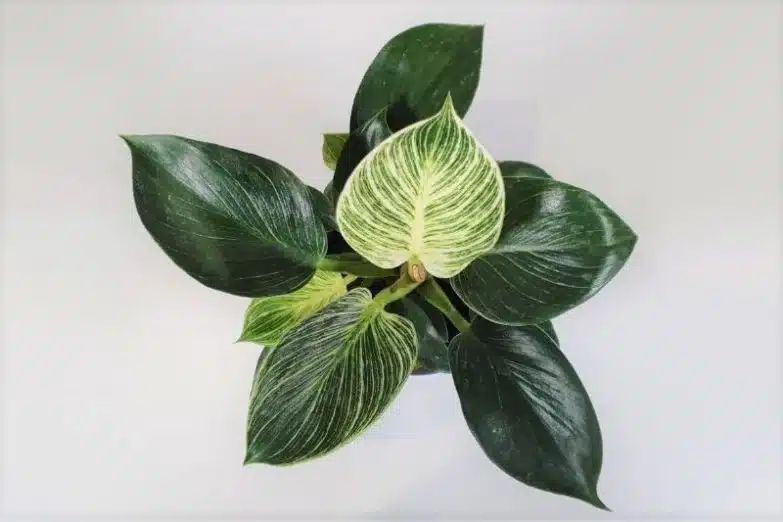
Lack of water and humidity levels can also cause the plant to revert. If this is the case you may need to propagate the variegated leaves to start a new plant with more white stripes. Just remember to keep it watered and give it the appropriate growing conditions.
FAQ’s
Is Philodendron Birkin hard to care for?
Philodendron Birkin is an easy to care for plant. It requires little attention in terms of feeding and pruning. As long as light, humidity, and watering recommendations are followed, it is similar to raising most other tropical houseplants.
How big do Philodendron Birkin grow?
These plants can grow up to 3 feet tall. Their leaf expanse is typically around 8-12 inches wide.
How rare is a Philodendron Birkin?
Because of its hybrid nature, the Birkin used to be quite rare and hard to find. When you could find them, they were quite expensive. However, because of their unique look and ease of care they are becoming more popular and readily available.

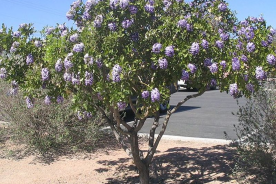

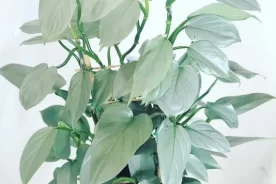

No Comments